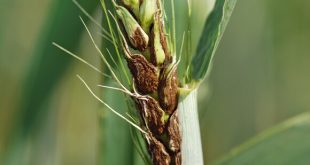Ratargul Swamp Forest is the only swamp forest located in Bangladesh and one of the few freshwater swamp forests in the world. In the previous article, it’s Geography, Ecosystem & Diversity had been discussed. In this one, some of the beauty enhancer and beneficial trees of Ratargul will be discussed in detail.
The amazing Ratargul carries an unique floral and faunal composition than other forested areas of Bangladesh. 73 species of plants could be found in this forest till now. Among them, “Koroch tree” is the most common one. Along with Koroch, three more plants will have discussion in this article. Let’s have a look on their scientific as well as local names:
Best safe and secure cloud storage with password protection
Get Envato Elements, Prime Video, Hotstar and Netflix For Free
Best Money Earning Website 100$ Day
#1 Top ranking article submission website
- Rosa involucrata (বিশেষ প্রজাতির গোলাপ)
- Pongamia pinnata (করচ )
- Barringtonia acutangula ( হিজল )
- Crateva nurvala (বরুণ )
Pongamia pinnata
Pongamia pinnata (করচ) is a genus of legume in the fabaceae family. Recently it has been proposed that the genus Pongamia be rejected in favor of the genus Millettia and many species have been reclassified. Due to recent interest in biofuels, Pongamia is often the generic name given for Millettia pinnata, a tree being explored for producing biodiesel.
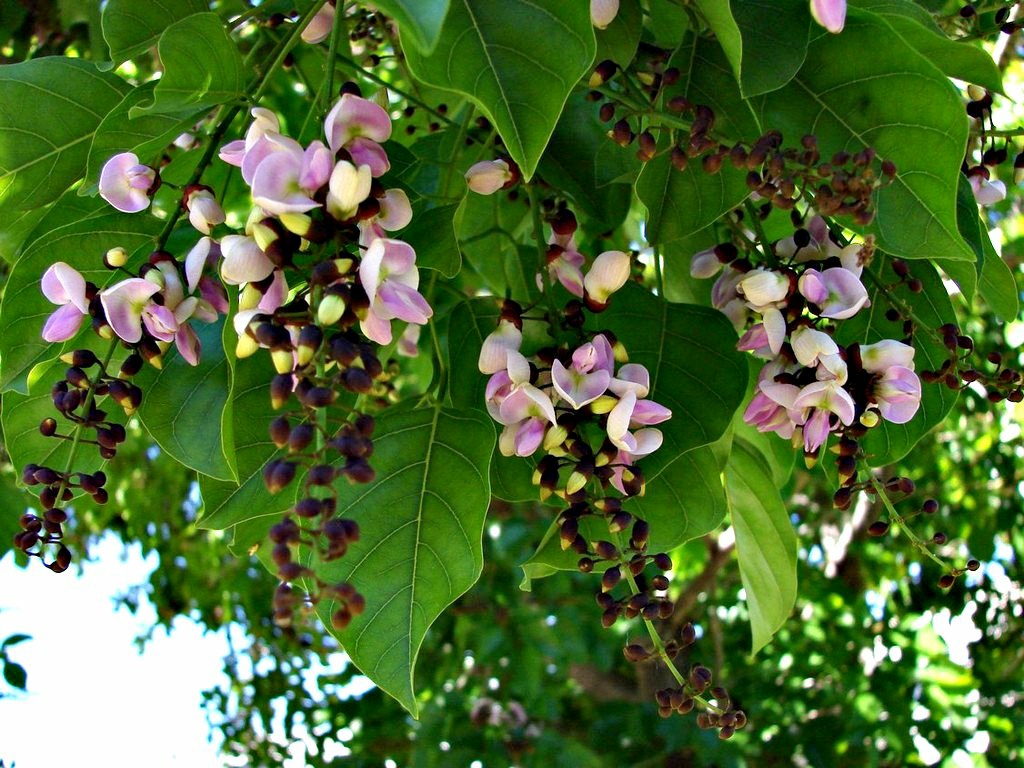
It is a fast-growing, medium-sized, evergreen or briefly deciduous, glabrous shrub or tree with a broad crown of spreading or drooping branches. It usually grows 15 – 25 metres tall, with a straight or crooked bole 50 – 80 cm or more in diameter.
- Habit: Evergreen.
- Distribution: E. Asia – Indian subcontinent, through south-east Asia to north-eastern Australia, Fiji and Japan.
- Habitat: Occurs naturally in lowland forest on limestone and rocky coral outcrops on the coast, along the edges of mangrove forest and along tidal streams and rivers, often with its roots in fresh or saltwater.
- Common name: Pongam oiltree, Indian beech.
-
Identification:
1. Leaf: Imparipinnate. Ovate-oblong shaped. Leaflets 5-7, opposite, leaflet 4.5-12 x 2-7 cm, margin entire, secondary veins 5 – 8 pairs, pinnate, tertiary veins reticulate, obscure.
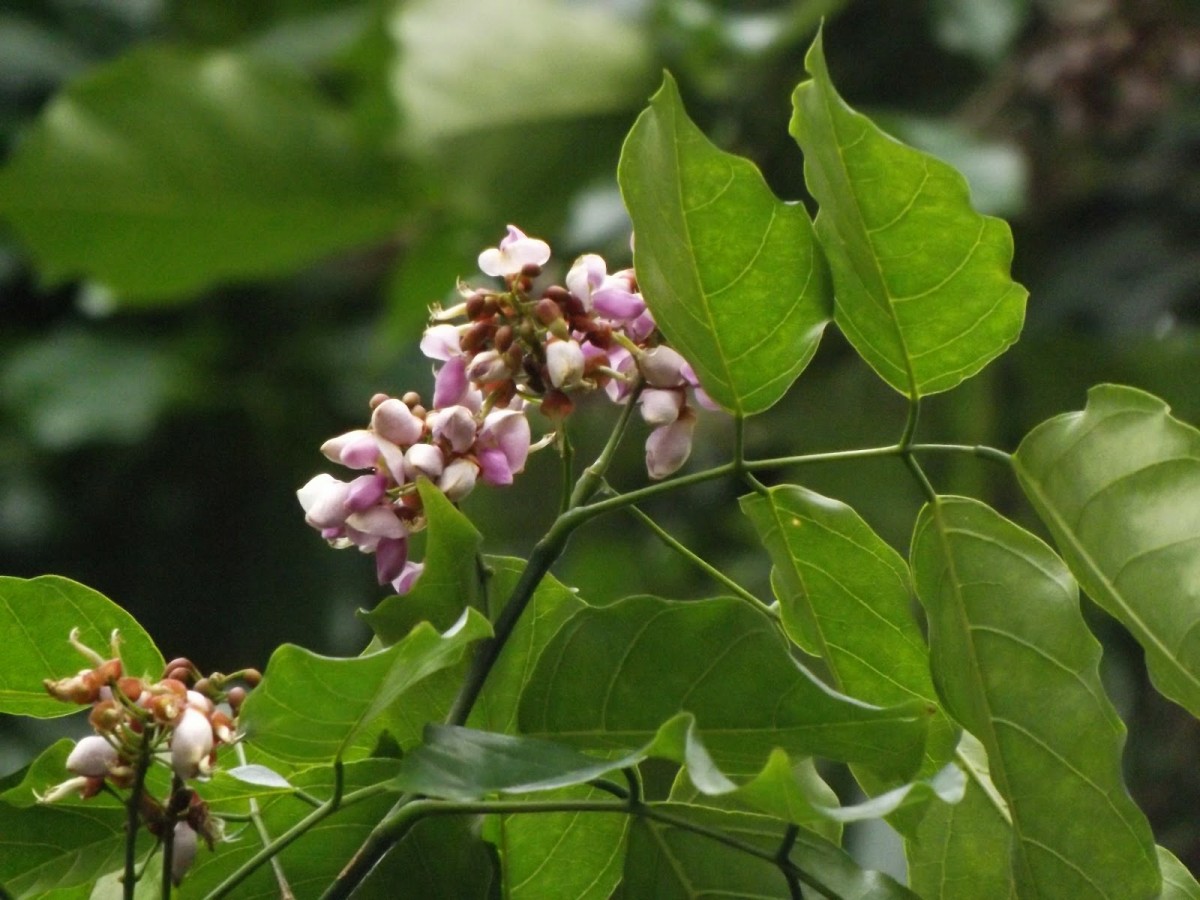
2. Flower: Flowers bisexual, purplish-white, 15-18 mm long, in lax axillary racemes, axis pubescent; bracts small, cauducous. Calyx tube campanulate; minutely 5 toothed, apex truncate; corolla exserted. Petals 5, clawed; standard suborbicular with curved folds above the claw; wings obliquely oblong, slightly adnate above the claws to the obtuse keel petals which are joined near the tip. Stamens 10, monadelphous, the axillary stamen free below and above; anthers uniform. Ovary subsessile, inferior, 1-celled, ovules 2; style in curved, beardless; stigma capitate.
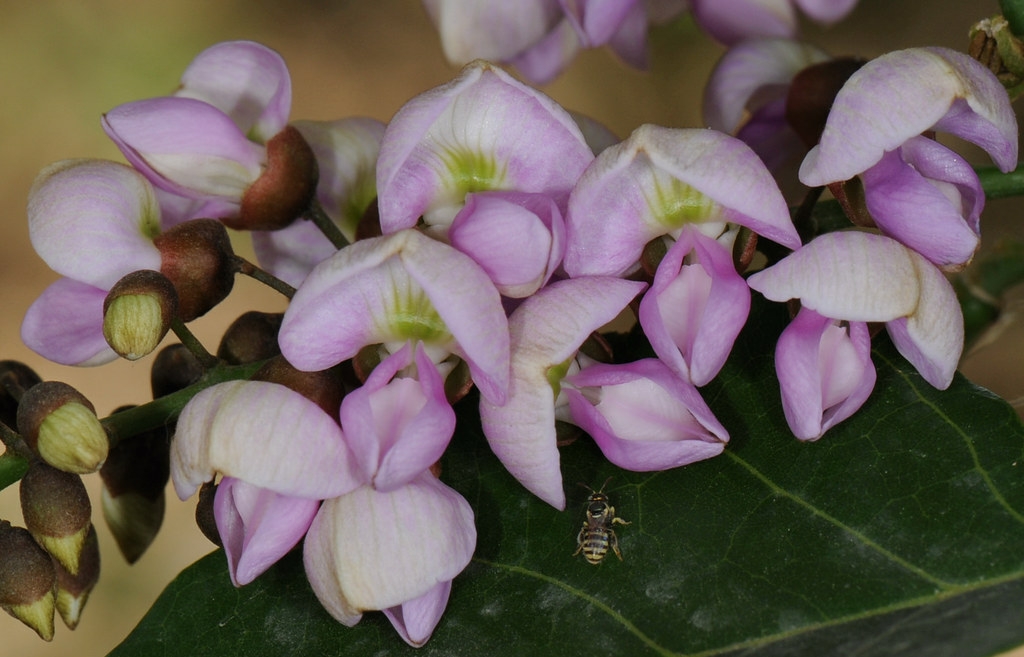
3. Fruits: Fruits are Pod type. Size: 4-5 x 2-2.5 cm. Obliquely oblong, flat, thick, pointed at both ends, indehiscent, slightly falcate. They have one seed.
Uses:
- Dyspepsia, Skin diseases, Rheumatic joints, Scabies, Bronchitis, Whooping cough, Febrifuge, Bleeding haemorrhoids.
- A multipurpose tree, it is particularly valued for its oil and also supplies dyestuff, wood, fuel, insect repellent, medicines and various other commodities. The tree is planted in the humid tropical and subtropical lowlands around the world as a pioneer and soil reclamation plant.This species is one of the few nitrogen-fixing trees to produce seeds containing oil, and these are collected in vast amounts in India for commercial processing of industrial uses.
- The tree is often planted in homesteads as an ornamental tree and in avenue plantings, roadsides, and along stream and canal banks. However the large amounts of flowers, leaves and pods that it regularly sheds make it not very suitable for this purpose.
- Parts Used: Dried foliage, Whole herb.
- Known Hazards: The seeds are poisonous.Pounded and roasted seeds used to be utilized as fish poison.
- Mode of Propagation: Seeds, Cuttings.
- Commonly seen growing in areas: River banks, Coastal areas.
Rosa involucrata
Rosa involucrata is a special kind of rose. It is an endangered species. Basicaclly A large shrub growing to 6 metres (20 ft) tall and it can grow in swampy areas such as the haors (or beels, jheels) of Bangladesh. White, near white or white blend Species. Moderate, sweet fragrance. Average diameter 3″.
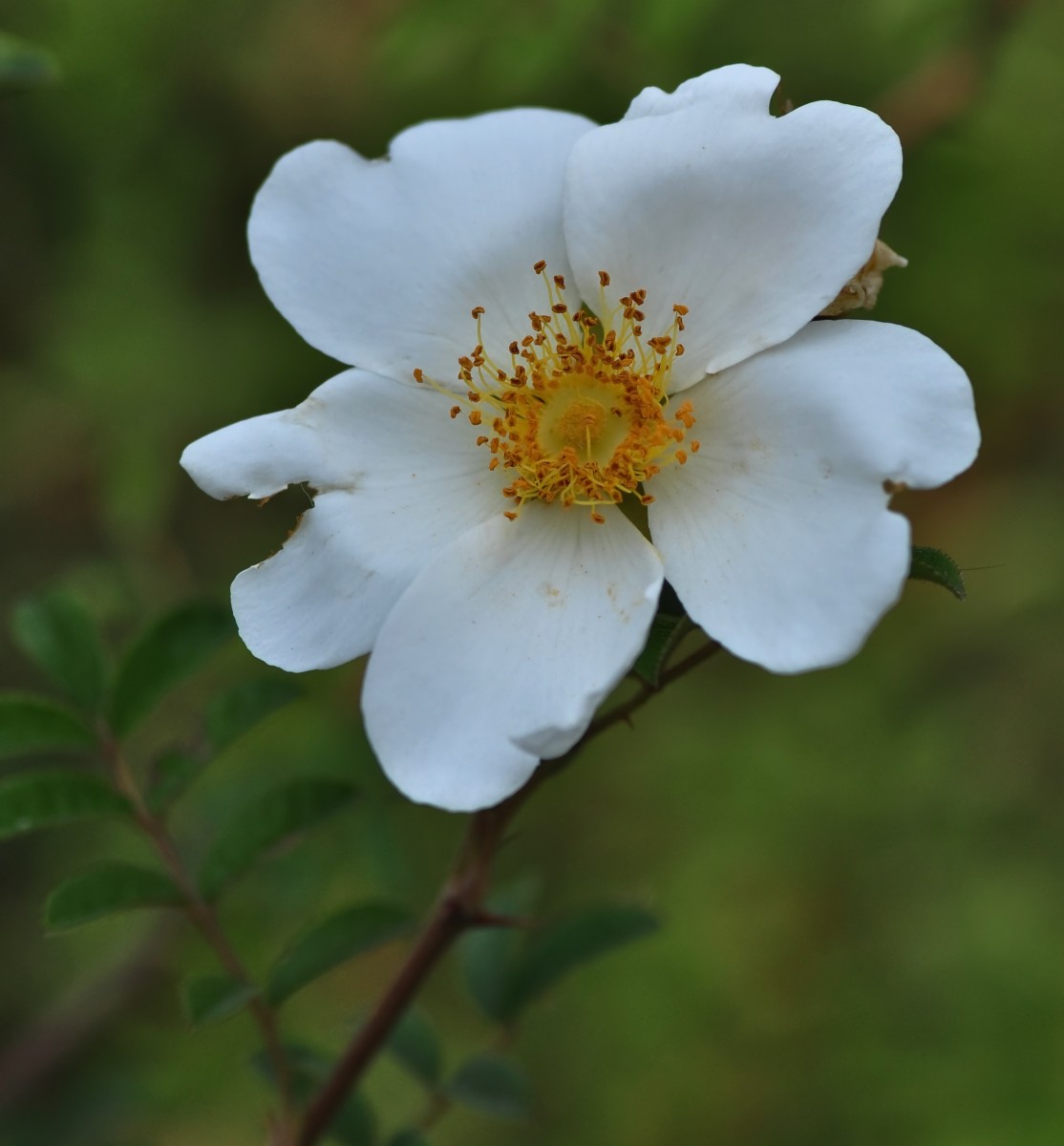
This flower was introduced in United Kingdom by Reginard Whitley in before 1820 as ‘Rosa involucrata’.
Exhibition name: R. clinophylla
R. clinophylla Thory (1817) is native to tropical India, Bangladesh, Myanmar, Laos and Thailand, where it thrives in swampy areas, living partly submerged part of the year. A mountain form grows in Nepal.
Three variants have been recognized: var. clinophylla, var. glabra (smooth and hairless) and var. parvifolia (small-leafed). Some describe the fragrance of the blooms is as acetone
- Species: Wild.
- General Habitat: Edges of sluggish strems.
- Distribution:
- Global Distribution: India, Assam, Meghalaya.
- Local Distribution: Throughout Assam.
-
Morphology
Deciduous trees, up to 8 m.
Height of 3′ to 15′ (90 to 455 cm).
- Leaf: Leaves simple, alternate, spiral; 11 leaflets.
Stipules subulate, fimbriate.
Petioles 6 -10 mm long, 2-4 glandular near apex.
Lamina 8-14 x 3-5 cm, rounded at base, acuminate at apex, serrate to serrulate along margins, glabrous at length, puberulous on mid rib beneath. - Flower: Flowers 2 -2.5 cm across, pink to white, axillary, solitary or fascicled, concealed by bud scales; calyx lobes oblong, silky tomentose outside; petals, obovate, pink. Drupes 3-6 cm long, elliptic-ovoid, succulent, velutinous with red tinged; pyrenes 3-4 x 2-3 cm, elliptic, rugose, irregularly furrowed and pitted.
Medium, single (4-8 petals), cluster-flowered bloom form. Occasional repeat later in the season. Medium buds.
- Cyclicity: Flowering & Fruiting:- February-July.
- Benefits: From winter protection in colder climates. It can be grown as a shrub. Heat tolerant. Prefers warmer sites. Produces decorative hips. Requires spring freeze protection (see glossary – Spring freeze protection) .
Barringtonia acutangula
Barringtonia acutangula (হিজল) is a species of Barringtonia native to coastal wetlands in southern Asia and northern Australasia, from Afghanistan east to the Philippines and Queensland.
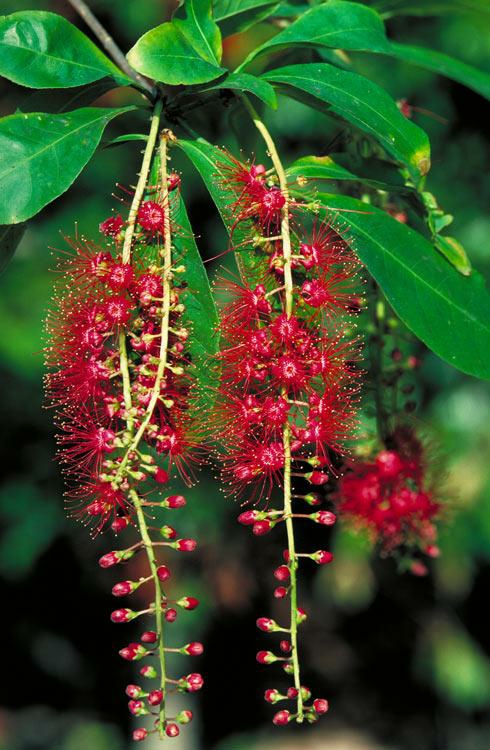
Barringtonia is an evergreen tree of moderate size, called by Sanskrit writers Hijja or Hijjala.This plant is a big tree that grows to about 8–15 m high. Its leaves are thick, smooth and oval in shape. The plant has drooping raceme with numerous large, white flowers. Its fruit is oval-shaped with 1 seed inside.
- Distribution: Asia – Afghanistan, Indian subcontinent, Myanmar, Thailand, Cambodia, Laos, Vietnam, Malaysia, Indonesia, Philippines, New Guinea, Australia.
- Habitat: River banks, swampy sites or rocky or sandy shores at elevations from sea level to 400 metres.
- Common name: freshwater mangrove, itchytree and mango-pine, Indian Oak.
-
Identification:
This plant is a big tree that grows to about 8–15 m high.
1. Leaf: Its leaves are thick, smooth and oval in shape, about 8–12 cm long and 4–5 cm wide, with reddish petioles about 0.5–1.0 cm long.
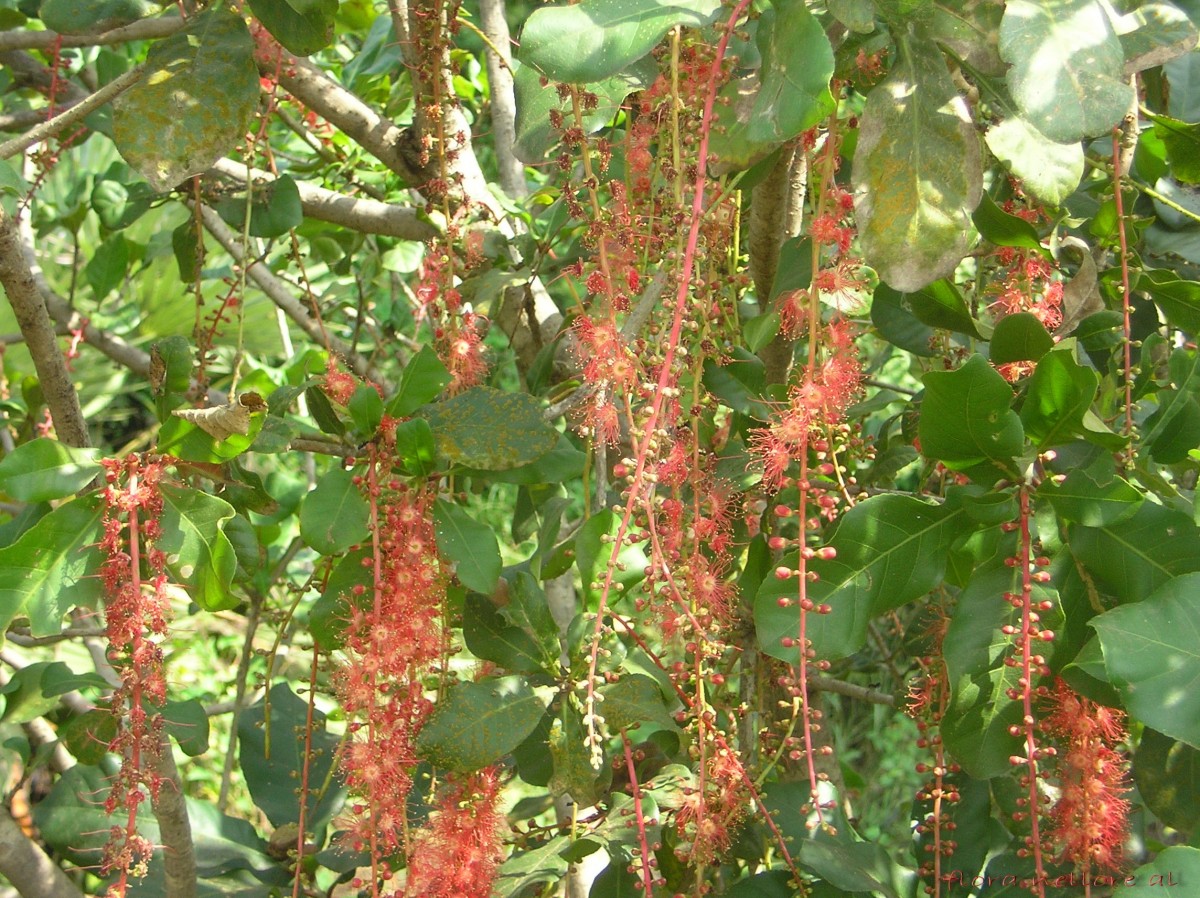
2. Flower: The plant has drooping raceme of up to 50 cm long, with numerous large, white flowers.
3. Fruit: Its fruit is oval-shaped and about 3 cm long, with 1 seed inside.
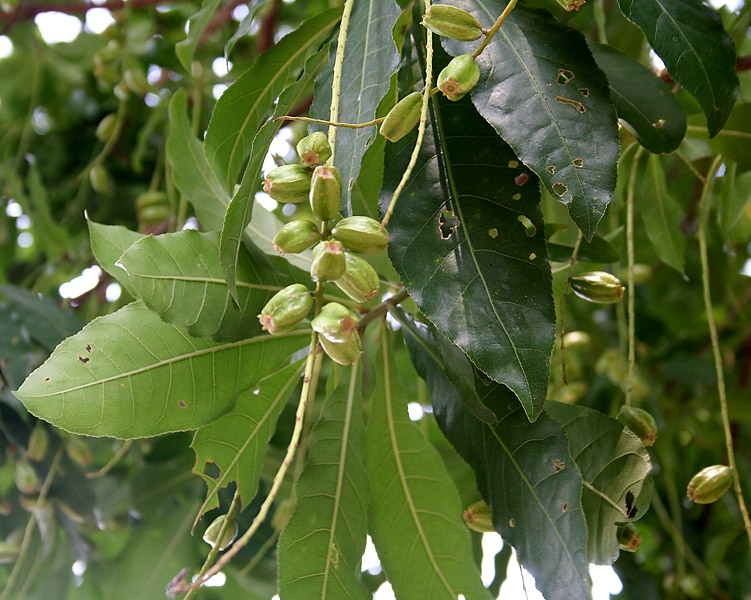
Uses:
- Food: The young leaves of this plant are consumed as food, such as in Vietnam where they are eaten fresh with other vegetables, meat and shrimp. The young leaves are eaten as a vegetable.
- Medicinal uses: Research on this plant has reported a number of medicinal uses, including antitumour (seed extract), antibiotic, inhibition of growth of Helicobacter pylori, anticeptive activity and antifungal activity.
- The 1889 book ‘The Useful Native Plants of Australia’ records that “In India an extract or juice is obtained from the leaves of this tree which, when mixed with oil, is used in native practice for eruptions of the skin. The kernels powdered and prepared with sago and butter, are used in diarrhoea; mixed with milk they produce vomiting (Treasury of Botany). The root is bitter, and is said to be similar to Cinchona, but also cooling and aperient. (Drury).”
- The plant is harvested from the wild for local use, mainly as a medicine but also for food and materials. It is sometimes grown to provide shelter from the wind.
- The bark in decoction is given as a stomachic.
- The scraped bark is squeezed with coconut meat and the juice is drunk daily for treating pneumonia, diarrhoea and asthma.
- Externally, it is used for poulticing wounds, ulcers, sores, itches etc.
- The root is considered aperient.
- Powdered seeds, in small doses, are given to children as an expectorant and emetic.
- It is further used as an anthelmintic.
- The seed is used to treat ophthalmia.
- The liquid obtained by pounding the wood in water is considered haemostatic and given in menorrhagia.
- The leaves are used to treat diarrhoea.
- Agroforestry Uses: Trees are planted as a windbreak.
The flowers produce copious nectar and attract bees, who produce a good honey from it.
- Other Uses: The bark is a source of tannins.
The heartwood is light pinkish to reddish-grey, or in some cases nearly white towards the outside of the log; it is not distinctly demarcated from the sapwood. Texture is medium to fine, the grain straight, the wood lustrous, with a smooth feel. The wood is light in weight, soft and fairly durable. It is easy to saw, works well by hand and on machine, and finishes to a dull smooth surface. If cut on the quarter it presents a noticeable silver grain, which should be taken advantage of in cabinet work, as it apparently does not warp much if so cut. It is used for boatbuilding, well construction, rice pounders, cabinet work, and carts. The wood turns black if buried in mud.
- Known Hazards: The bark is used to intoxicate fish.
- Mode of Propagation: Seed – best sown as soon as it is ripe in a position in full light. About 90% of fresh seed germinates.
Crataeva nurvala
Crataeva magnum, Crataeva religiosa, C. tapia, and C. nurvala (বরুণ) are sometimes considered to be synonym species. The family name of these species is Capparaceae.
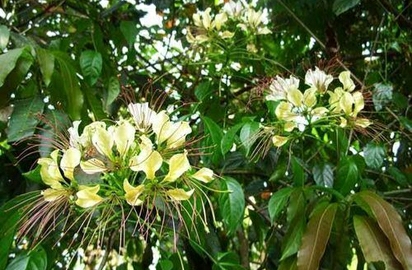
It is a medium-sized, deciduous tree which may reach a height of 50 feet. The bark is smooth and brown while the branches have white patches tinged with purple and yellow.
- Nature: Tree.
- Taste: Bitter, astringent, pungent, sweet
- Distribution: The small wild or cultivated tree is widespread from India to Southeast Asia, south of China. It grows lowlands to an altitude of 1,000 m (3,300 ft) above sea level. It occurs on glades, at the edge of a forest, near rivers and lakes, etc.
- Habitat: Varuna is found throughout India, especially in sub-Alpine zones along streams and rivers.
It prefers a wet soil with a pH of 7, with abundant sunlight. It is found in abundance in Kerela, Madhya Pradesh, Bengal, and Assam.
Varuna is frequently found planted near temples, where it is cultivated for its healing qualitiTree.
- Common Names: Three leaved caper, barun, baruna, borun, crataeva, varun, bonna pithagola.
-
Identification:
1. Leaf: The leaves of the varuna are trifoliate, 8-12 cm long, with oval leaflets.

2. Flowers: The flowers are greenish-white, light yellowish or creamy colored, and are fragrant. The plant flowers in March and fruits in June.
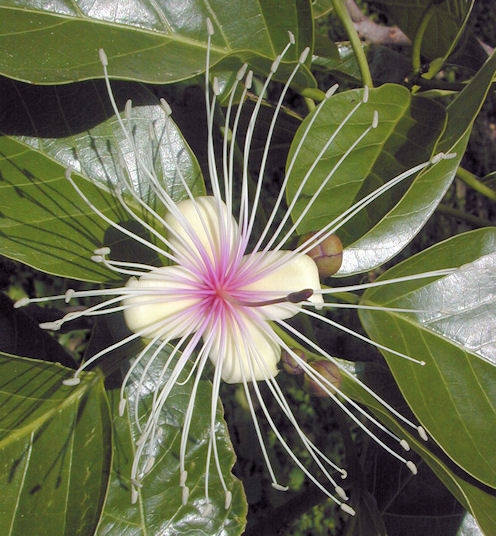
3. Fruits: The fruits are ovoid berries, 2.5 cm in diameter, resembling a lemon and ripening to a red color.
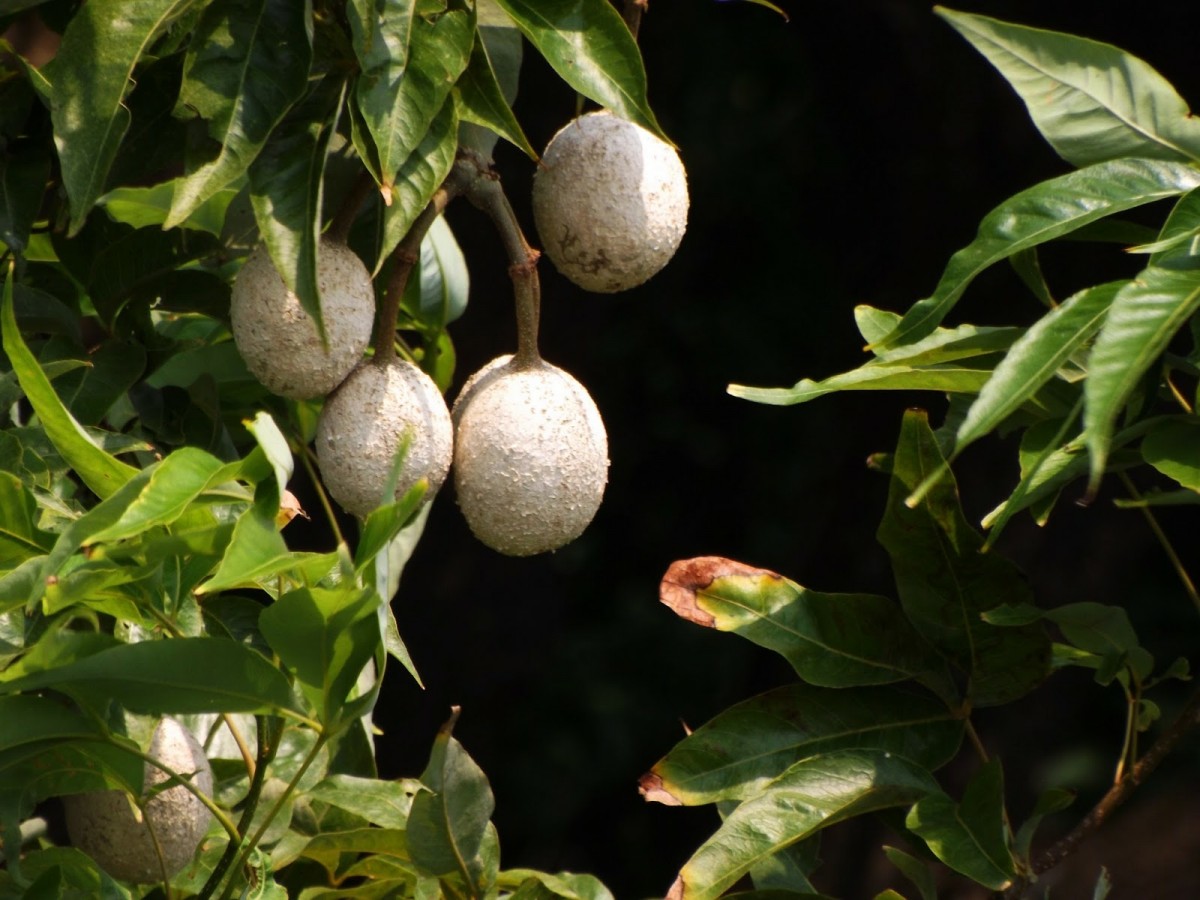
Uses:
- Crataeva nurvala is one of the best litholytic herbs (ability to break up stones).
- Scientific research has indicated that a constituent of varuna, lupeol, deactivates the enzyme glycolate oxidase, reducing the body’s production of oxalates which combine with calcium to form kidney stones.
- Additionally, varuna is used as a natural diuretic as it also could hinder kidney stones formation.
- Crataeva nurvala is an important Ayurvedic herb that is especially valued for its effectiveness in the treatment of renal conditions.
- Varuna is used by traditional Ayurvedic herbalists to increase appetite while stimulating digestion and elimination and also as an herbal treatment for flatulence and abdominal pain.
- Varuna is also discussed in the ancient Vedic literature as an important herb for use as a blood purifier.
- The bark of the varuna is believed to be especially effective when used to treat infections of the urinary tract.
- It has been used traditionally as a natural herbal treatment in urinary calculi, dysuria (painful urination) and cystitis.
- Varuna may support the cardiovascular system by maintaining the suppleness and openness of the arteries.
- Crataeva nurvala is used as a cholegogue (promotes the discharge of bile from the system), anthelmintic (expels worms) and anti-amoebic in both intestinal and hepatic infestations.
- Varuna is considered to be a useful herb for anorexia, tumors and liver disorders and externally, varuna is used as a poultice for the treatment of cervical adenitis, abscess, enlarged spleen, rheumatic joint pain, and edematous wounds.
- The fresh juice of leaves of varuna is commonly used as a bitter tonic.
- Plant Part Used: Bark, root bark, stem bark and leaves.
- Side effects: It may cause blisters in people with sensitive skin.
Varuna bark and root appear to have very little evidence of toxicity when used in normal dosages.
Trees discussed above are the real greeny beauty of Ratargul Swamp Forest. They enhance natural resources as well as environmental potentiality. They’re making the ecosystem developed & livelier. Just like some bless-trees are described here, Some more green magic stories will be discussed in the next article.
 Plantlet The Blogging Platform of Department of Botany, University of Dhaka
Plantlet The Blogging Platform of Department of Botany, University of Dhaka





